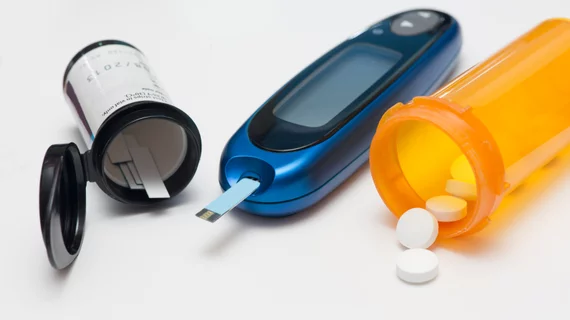Endocrinologists defend lower blood sugar targets
The debate over the ideal blood glucose target for type 2 diabetics continued this week in the Annals of Internal Medicine.
A group of researchers led by Boris Draznin, MD, PhD, published a commentary defending the current recommendations to achieve hemoglobin A1c (HbA1c) levels below 7 percent for most adults. Those guidelines were called into question in March when a writing group from the American College of Physicians (ACP) published a guidance statement recommending a less aggressive target between 7 and 8 percent, with ACP president Jack Ende, MD, saying that range “will best balance long-term benefits with harms such as low blood sugar, medication burden, and costs.”
The American Diabetes Association (ADA) quickly fired back, saying the 7 percent threshold was based on substantial evidence from four clinical trials and that there should be no lower limit on A1c targets as long as there is minimal risk of hypoglycemia.
Draznin and colleagues align with the ADA’s recommendation and said all stakeholders should come to an agreement on a single set of directions for the sake of clarity.
“The recently published guideline from the American College of Physicians (ACP) recommending an individualized approach to glycemic targets in older populations with a limited lifespan or multiple comorbid conditions is in line with previously published guidelines from the American Diabetes Association and other organizations,” wrote Draznin, with the University of Colorado, and colleagues. “However, as clinicians, we believe that other ACP recommendations, particularly those that advocate relaxation of glycemic control ‘in most patients’ with type 2 diabetes and ‘deintensification’ of therapy in patients with an HbA1c level below 6.5%, have generated substantial concern among endocrinologists.”
Taking patients off therapy once they’ve reached certain A1c levels, the editorialists argued, makes little sense if their diabetes is under control and they aren’t having adverse effects from low blood sugar. In addition, loosening blood glucose targets could have a large population-wide impact considering a new case of diabetes is diagnosed every 21 seconds in the U.S., according to the authors.
“The risk relationship established for HbA1c levels and diabetic complications in (the United Kingdom Prospective Diabetes Study) shows that a 1% absolute increase in HbA1c level translates into a 37% increased risk for severe microvascular end points, a 21% increase in diabetes-related deaths, and a 14% increase in myocardial infarctions,” Draznin et al. wrote. “The excess risk for diabetes complications with HbA1c levels of 6% to 6.9% versus 7% to 7.9% is approximately 20 cases per 1000 patient-years, including around 8 diabetes-associated deaths per 1000 patient-years.”
Draznin and coauthors said the ACP’s recommendations for less intensive blood glucose lowering were based partially on trials with follow-up durations too short to show significant differences in long-term complications.

